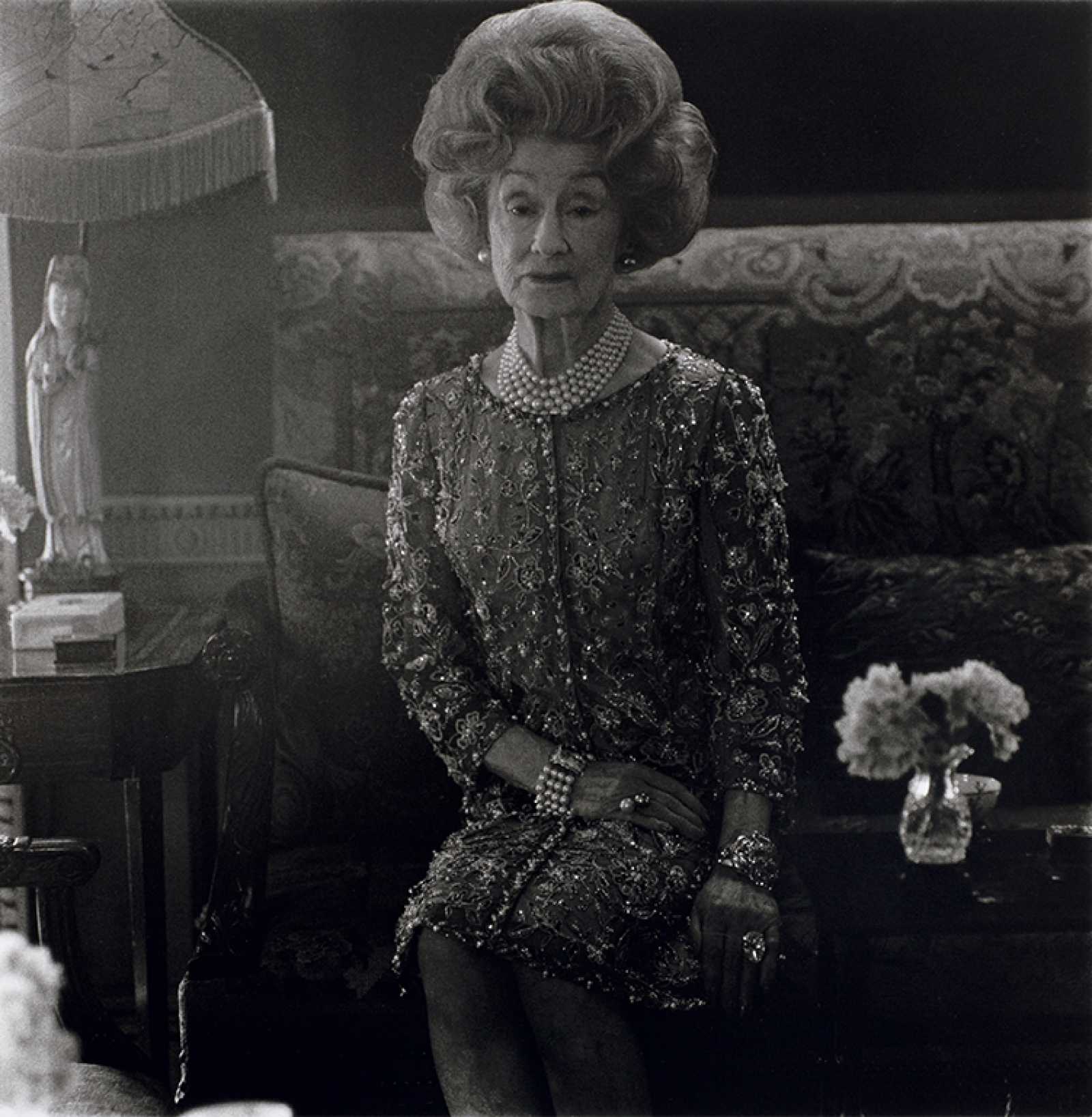Artworks of the Week
Diane Arbus
Mrs. T. Charlton Henry, with her collar of pearls and trappings of wealth, might have appeared an atypical subject for Diane Arbus, the singular photographer best known for her vernacular images of social outsiders. In this dimly lit portrait commissioned for Harper’s Bazaar, Mrs. Henry gazes directly at the camera with a careful posture that appears to hold her bouffant of hair aloft. Amid the apparent luxury of her home, Mrs. T. Charlton Henry’s narrow frame seems almost fragile, both protected and weighed down by the clothes and furnishings that envelop her. Arbus often shot her subjects in their homes, reflecting the intimate relationships of trust that the photographer built. Yet they also reveal a voyeuristic pleasure. Arbus appeals to our natural curiosity to look at the other, and then forces us to linger, surprising us with the raw imperfections of humanity.
Arbus was one of a wave of new documentary photographers to emerge in the 1960s and 1970s. Following the composed pictorialism of photographers such as Alfred Steiglitz and Paul Strand, and the consciousness of social documentarians of the first half of the twentieth century, Arbus draws from both fine art and documentary traditions to explore the grittier and often unseen realties of everyday life. Her distinctive photographs are both disarmingly unsentimental and richly observant, embracing the classic portrait tradition while encapsulating emotional response and social critique.
Diane Arbus (American, 1923‑1971), Mrs. T. Charlton Henry on a couch in her Chestnut Hill home, Philadelphia, Pa., 1965, gelatin silver print, edition 20/75, 19 7/8 × 15 7/8 inches. Gift of Joe and Pamela Bonino, 89‑2010.
Deborah Butterfield
Deborah Butterfield is an American sculptor known for her large sculptures of horses. She and her husband, artist John Buck, divide their time between Hawaii and a farm in Bozeman, Montana, where Butterfield trains, rides, and bonds with her horses.
Butterfield’s early horse sculptures from the 1970s were made of natural materials such as mud, clay, and sticks, but in the 1980s she began using scrap metal or cast bronze. Ryuanji, a later work, combines both wood and bronze in its construction. She first gathered large branches of driftwood to assemble a skeleton-like armature, adding smaller branches to define the curves and graceful lines of the equestrian form. Each wood piece was then dismantled, cast in bronze, and reassembled in its original position. The bronze patinas were achieved by applying various chemical washes to recreate the natural hues and textures of worn and weathered driftwood.
Butterfield explains that her horse imagery provides her a way of creating a metaphorical self-portrait. She has created horses in a myriad of poses, postures, and attitudes from standing upright, as in this work, to grazing or lying down—each with its own individual personality. The spaces between the branches give her horse its rhythm and relative density, while inviting the viewer to discover hidden secrets such as the root that is wrapped around a rock. According to Butterfield, in this work, “The striated pattern of parallel lines reminded me of raked Zen gardens, so I titled this gentle horse Ryuanji.”
Deborah Butterfield (American, born 1949) Ryuanji, 2006, bronze, 86 x 119 x 31 inches. Museum purchase with funds provided by David Kaplan and Glenn Ostergaard, 116‑2006.


